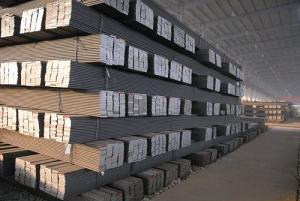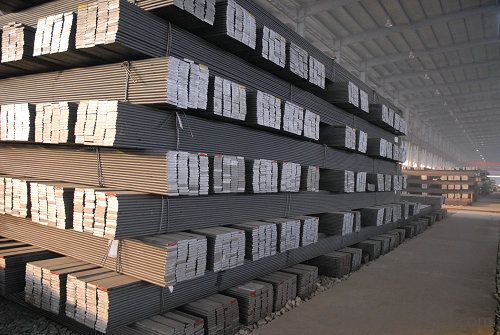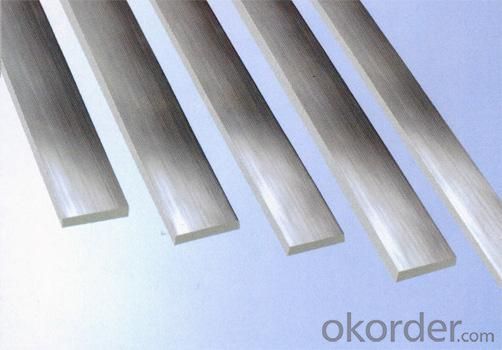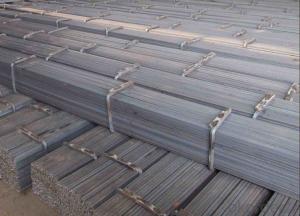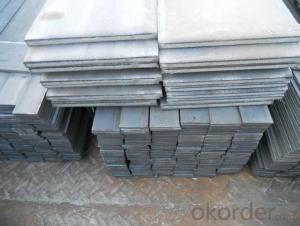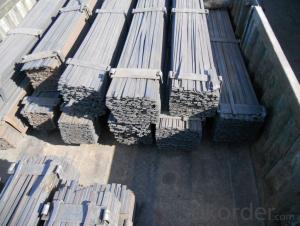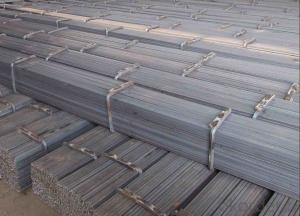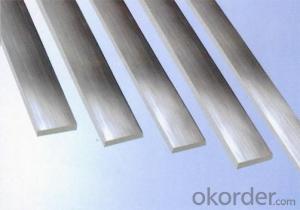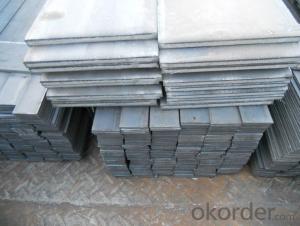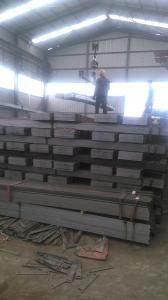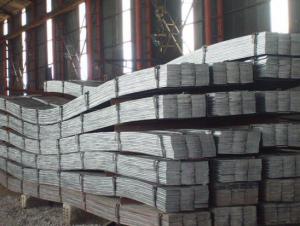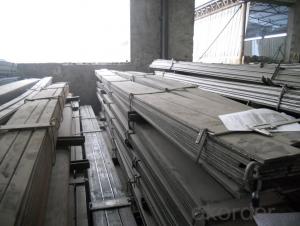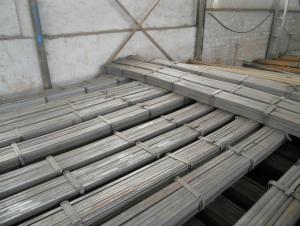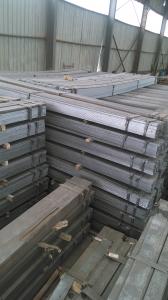Width 20mm steel flat bar for construction
- Loading Port:
- Tianjin
- Payment Terms:
- TT OR LC
- Min Order Qty:
- 10000 m.t.
- Supply Capability:
- 100000 m.t./month
OKorder Service Pledge
OKorder Financial Service
You Might Also Like
Product Description:
OKorder is offering width 20mm steel flat bar for construction at great prices with worldwide shipping. Our supplier is a world-class manufacturer of steel, with our products utilized the world over. OKorder annually supplies products to European, North American and Asian markets. We provide quotations within 24 hours of receiving an inquiry and guarantee competitive prices.
Product Applications:
Width 20mm steel flat bar are ideal for structural applications and are widely used in the construction of buildings and bridges, and the manufacturing, petrochemical, and transportation industries.
Product Advantages:
OKorder's Steel Flat Bar for construction are durable, strong, and resist corrosion.
Main Product Features:
· Premium quality
· Prompt delivery & seaworthy packing (30 days after receiving deposit)
· Corrosion resistance
· Can be recycled and reused
· Mill test certification
· Professional Service
· Competitive pricing
Product Specifications:
Manufacture: slited
Slitting precision (width) : 0.5 mm or less
Raw material: Q235B, Q345B, Q235-1 b
crosscutting precision (length) : 2 mm or less
Processing: the thickness of 2.0-16 mm;
Shear length: 2000 mm above
Wide degree: 15-1250 - mm;
Leveling precision: 1-2 MM square
Packaging: Export packing, nude packing, bundled
FAQ:
Q1: Why buy Materials & Equipment from OKorder.com?
A1: All products offered byOKorder.com are carefully selected from China's most reliable manufacturing enterprises. Through its ISO certifications, OKorder.com adheres to the highest standards and a commitment to supply chain safety and customer satisfaction.
Q2: How do we guarantee the quality of our products?
A2: We have established an advanced quality management system which conducts strict quality tests at every step, from raw materials to the final product. At the same time, we provide extensive follow-up service assurances as required.
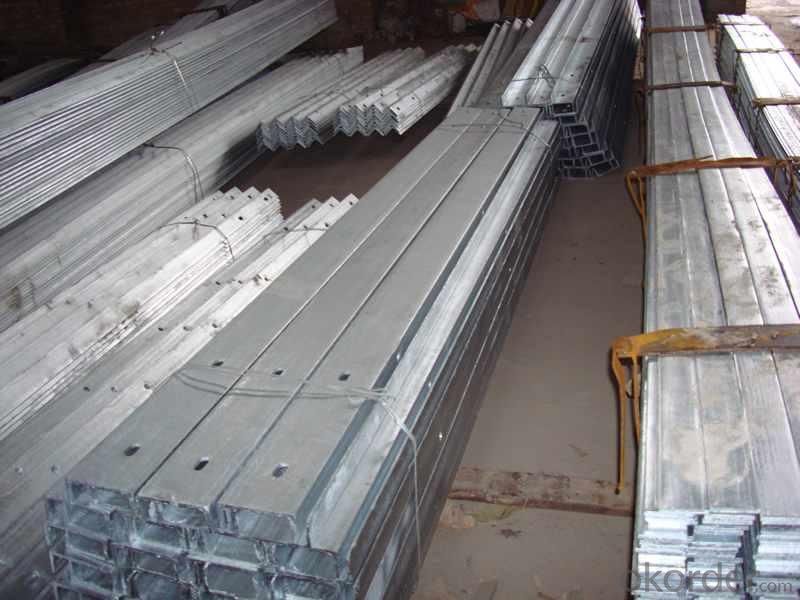
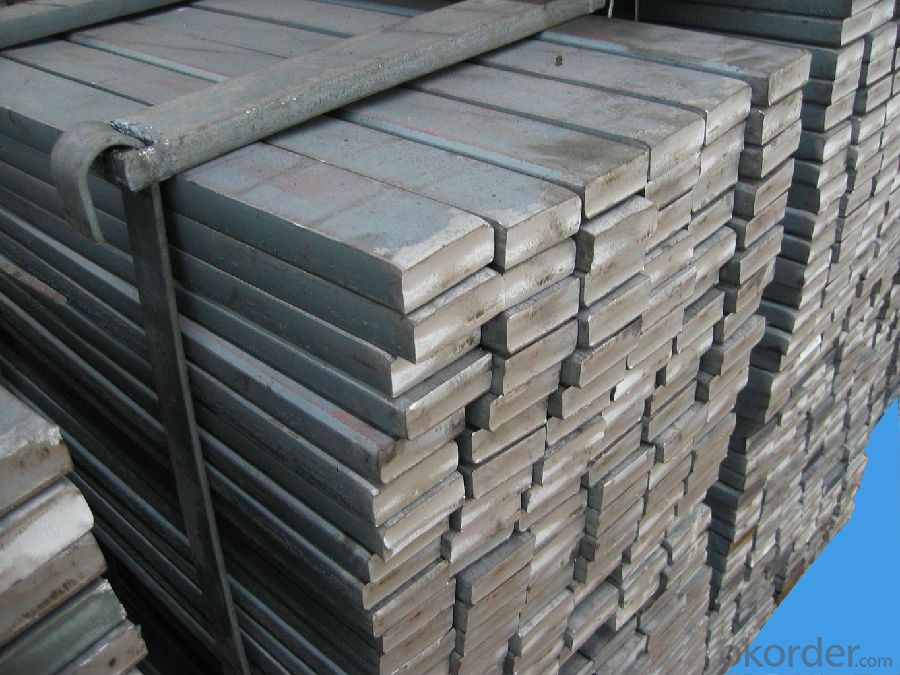
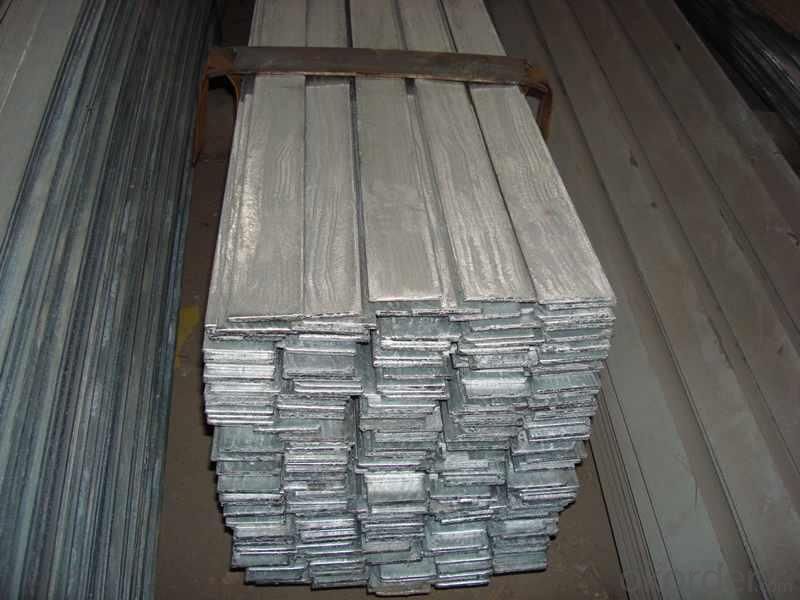
- Q: Are steel flat bars suitable for marine or saltwater applications?
- Due to their vulnerability to corrosion, steel flat bars are generally unsuitable for use in marine or saltwater settings. When exposed to saltwater or other corrosive surroundings, steel flat bars can rapidly rust and degrade. This deterioration can jeopardize their structural strength, rendering them unfit for marine use where they would be consistently exposed to saltwater. To guarantee longevity and durability in saltwater applications, it is advisable to opt for materials explicitly engineered for marine environments, such as stainless steel or corrosion-resistant alloys.
- Q: Are steel flat bars suitable for making gears or sprockets?
- Steel flat bars are indeed suitable for making gears or sprockets, especially if they are made from high-quality steel. Steel is known for its strength, durability, and resistance to wear and tear, making it an excellent material for gears and sprockets that need to withstand heavy loads and repetitive motion. Additionally, steel can be easily machined and shaped into the desired gear or sprocket profiles, making it a versatile choice for such applications. However, it is important to note that the specific requirements of the gears or sprockets, such as size, tooth profile, and surface finish, should be taken into consideration when selecting the appropriate steel flat bar for the job.
- Q: Can steel flat bars be used for making machinery parts or components?
- Yes, steel flat bars can be used for making machinery parts or components. Steel flat bars are commonly used in machinery manufacturing due to their strength, durability, and versatility. They can be easily cut, welded, and shaped to create various machine parts such as brackets, supports, frames, and gears. Additionally, steel flat bars offer excellent structural integrity and can withstand heavy loads and high temperatures, making them ideal for machinery applications.
- Q: What is the negative deviation allowed by the national standard for galvanized flat steel of 40*4?
- 40 is the width of the section steel, 4 is the thickness of the steel, and the unit is mm.Flat, refers to the width 12-300mm, thickness 4-60mm, cross section is rectangular in shape and with a blunt edge of steel. Flat steel can be finished steel, or can be used as the blank of welded pipe and thin slab for laminated sheet rolling.
- Q: Can steel flat bars be heat treated for increased strength?
- Steel flat bars have the ability to undergo heat treatment for the purpose of enhancing their strength. Heat treatment involves subjecting the steel to a specific temperature, maintaining it at that temperature for a specific duration, and then carefully cooling it. This process results in changes to the steel's microstructure, leading to improved mechanical properties, such as increased strength. The choice of heat treatment method depends on the desired strength and other required properties for the specific application of the steel flat bars. Common heat treatment techniques for steel encompass annealing, quenching, tempering, and normalizing. It is crucial to seek guidance from a metallurgical engineer or expert to determine the most suitable heat treatment approach for achieving the desired strength enhancement in steel flat bars.
- Q: How do you determine the fatigue strength of a steel flat bar?
- There are multiple steps and tests available to determine the fatigue strength of a steel flat bar. First and foremost, it is crucial to grasp the concept of fatigue strength. Fatigue strength refers to the maximum stress level that a material can endure cyclic loading without failure or damage. For a steel flat bar, determining its fatigue strength is essential to ensure its durability and reliability in applications that involve repeated or cyclic loading. One prevalent method to determine fatigue strength is through a fatigue test. This test entails subjecting the steel flat bar to cyclic loading, typically in the form of alternating tensile and compressive stresses. The test is commonly conducted using a fatigue testing machine or a universal testing machine equipped with a fatigue testing rig. During the fatigue test, the steel flat bar is loaded with a specific stress level known as the stress amplitude. The stress amplitude represents the difference between the maximum and minimum stress levels experienced by the material during each loading cycle. The test is typically carried out at a constant stress amplitude, and the number of cycles until failure is recorded. By plotting the stress amplitude against the number of cycles until failure on a graph, engineers and researchers can obtain a fatigue curve or S-N curve. This curve provides valuable information about the fatigue strength of the steel flat bar. It depicts the relationship between the stress amplitude and the number of cycles until failure, enabling the determination of the material's fatigue limit or endurance limit. The fatigue limit represents the maximum stress amplitude that the steel flat bar can withstand without experiencing failure after an infinite number of cycles. It serves as the threshold below which the material will not fail due to fatigue. Consequently, it is a critical parameter to consider in design and engineering applications. Aside from fatigue testing, other factors also impact the fatigue strength of a steel flat bar. These factors include surface finish, material composition, heat treatment, and residual stresses. If necessary, these factors can be analyzed and adjusted to enhance the material's fatigue strength. Overall, determining the fatigue strength of a steel flat bar involves conducting fatigue tests, analyzing fatigue curves, and considering various factors that influence the material's endurance limit. This information is vital to ensure the safe and reliable performance of the steel flat bar in applications subjected to cyclic loading.
- Q: How are steel flat bars measured?
- Typically, when it comes to steel flat bars, their width and thickness are the parameters used for measurement. The width denotes the bar's horizontal dimension, whereas the thickness denotes the vertical dimension. Both measurements are commonly expressed in millimeters or inches. For instance, a steel flat bar may be designated as 50 mm wide and 5 mm thick. Such measurements play a crucial role in assessing the bar's overall size and shape, ensuring its precise utilization in construction, manufacturing, or various other applications.
- Q: What are the different shapes available in steel flat bars?
- Steel flat bars come in various shapes, each designed to meet specific requirements and applications. Some of the different shapes available in steel flat bars include flat, round-edged, square-edged, and round. 1. Flat shape: This is the most common and basic shape of steel flat bars. It has a rectangular cross-section with two parallel and flat surfaces. Flat bars are widely used in construction, manufacturing, and fabrication industries for structural support, framework, and general applications. 2. Round-edged shape: Steel flat bars with round edges have a slightly curved or rounded profile on the edges. This shape is preferred when the flat bar may come in contact with other materials or people, as it reduces the risk of injuries or damage caused by sharp edges. Round-edged flat bars are commonly used in furniture, automotive, and architectural applications. 3. Square-edged shape: Similar to the flat shape, square-edged steel flat bars have sharp, square corners. This shape is ideal when precise right angles are required or when the flat bar needs to fit into specific slots or joints. Square-edged flat bars are commonly used in construction, machinery, and manufacturing industries. 4. Round shape: While not technically a "flat" bar, steel round bars are widely used in various industries. Round bars have a circular cross-section and are often used for applications that require strength, durability, and resistance to deformation. They are commonly used in construction, engineering, and automotive applications. It is important to note that these are just a few examples of the different shapes available in steel flat bars. Manufacturers may offer custom shapes and profiles to meet specific project requirements.
- Q: What is the maximum weight capacity of a steel flat bar?
- The maximum weight a steel flat bar can hold depends on various factors including its dimensions, grade of steel, and intended use. Steel flat bars come in different sizes and thicknesses, ranging from 1/8 inch to several inches thick. The weight capacity of a steel flat bar is determined by its strength and load-bearing capacity, which are influenced by the grade of steel used. Generally, higher grade steel with higher tensile strength can support greater weight loads. To determine the maximum weight capacity of a specific steel flat bar, it is crucial to refer to engineering specifications or consult a structural engineer. They can consider the dimensions, steel grade, and additional factors such as support structures, intended load distribution, and safety requirements for the specific application. By analyzing these factors, they can provide an accurate maximum weight capacity for the steel flat bar in question.
- Q: Can steel flat bars be used for creating shelving or storage systems?
- Yes, steel flat bars can be used for creating shelving or storage systems. Steel flat bars are known for their strength and durability, making them an ideal choice for supporting heavy loads on shelves. They can be easily welded or bolted together to create sturdy structures that can hold various items such as books, tools, or even heavy equipment. Additionally, steel flat bars can be cut to custom lengths, allowing for the creation of shelves that fit specific storage needs. Overall, steel flat bars provide a reliable and long-lasting option for constructing shelving or storage systems.
Send your message to us
Width 20mm steel flat bar for construction
- Loading Port:
- Tianjin
- Payment Terms:
- TT OR LC
- Min Order Qty:
- 10000 m.t.
- Supply Capability:
- 100000 m.t./month
OKorder Service Pledge
OKorder Financial Service
Similar products
Hot products
Hot Searches
Related keywords
